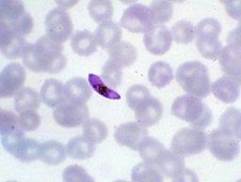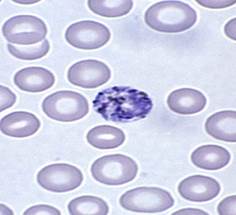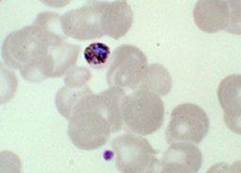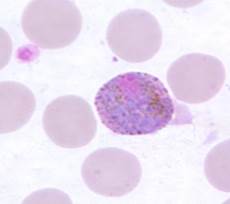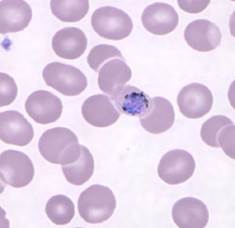The Parasite
There are five species of the Plasmodium parasite that can cause malaria in humans.
|
Plasmodium species |
About |
Gametocyte Phase |
|
Plasmodium falciparum |
|
|
|
Plasmodium vivax |
|
|
|
Plasmodium malariae |
Generally develops into mild clinical cases - Lower prevalence than P. falciparum and P. vivax - Found in South America, Asia and Africa |
|
|
Plasmodium ovale |
- Second most common strain in Africa (after P. falciparum) - Biologically and morphologically similar to P. vivax |
|
|
Plasmodium knowlesi |
- Previously found only in macaque monkeys - Found primarily in South-East Asia - Difficult to diagnose due to the trophozoite stages and erythrocytic stages being almost indistinguishable from P. falciparum and P. malariae, respectively |
|
This article provides more information on the biological differences between the different plasmodium species
The Malaria Life Cycle
The life cycle of plasmodium is quite complex, involving many different developmental stages of the parasite, both in mosquito vectors and humans. However, the key stages are highlighted in the gold boxes in the figure below. Move your mouse over these to see more information about the key steps.
 |
Move your mouse or pointer over the portions of the cycle outlined in gold to see brief explanations of the key stages of the malaria life cycle. | |
|
||
The two short videos below give nice overviews of the life cycle.
The links below provide additional information about the the biology of malaria.:
Signs and Symptoms of Malaria
Individuals infected with malaria experience symptoms relating to many systems in the body, including the nervous, circulatory, muscular, and respiratory systems. The magnitude of symptoms varies from uncomplicated to severe, and children are more likely to develop severe infections.
Uncomplicated malaria generally has symptoms which last 6-10 hours and involves three stages related to changes in body temperature:
- A cold stage (including shivering)
- A hot stage (including fever)
- Fever breaking (sweats and return to normal temperature)
Additional symptoms of uncomplicated malaria include nausea, headaches, vomiting, body aches, increased respiratory rate, and general malaise. The infection can also produce enlargement of the liver and increased respiratory rate. Signs of malaria may include mild jaundice and enlargement of the liver or spleen. Left untreated, uncomplicated malaria can progress to severe malaria in as quickly as 24 hours.
Severe malaria refers to cases that progress to hemolysis , which can result in severe anemia, hyperparasitemia
, which can result in severe anemia, hyperparasitemia , abnormal blood coagulation, acute kidney failure, hypoglycemia, and metabolic acidosis
, abnormal blood coagulation, acute kidney failure, hypoglycemia, and metabolic acidosis . The nervous system can also be affected resulting in cerebral malaria. Symptoms may include abnormal behavior, impairment of consciousness, seizures, coma or other neurologic abnormalities.
. The nervous system can also be affected resulting in cerebral malaria. Symptoms may include abnormal behavior, impairment of consciousness, seizures, coma or other neurologic abnormalities.


